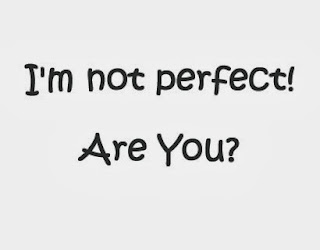
In this video,Project Based Learning Part 2: Experiences of a 3rd Grade Teacher, Dr. Strange interviews Anthony Capps. They discuss the teaching practice of Project Based Learning. Anthony Capps gave a great example of how he uses Project Based Learning in his third grade classroom. He had his students write a narrated script as if they were a child in Afghanistan. This gave the students the chance to explore their interests, state their point of view, and broaden their use of technology. I agree with Capps when he says that Project Based Learning is a way to really engage students. Their work is meaningful, and not just another worksheet to keep them busy. There was positive feedback from students, parents, and administrators. It wasn't just a learning process for the students, but also for Anthony Capps. I thought it was a great teaching strategy to use the feedback of students to help him develop the next project.

The third video, iCurio, an online tool which allows students to safely search websites for educational purposes. It allows the students to stop, and then pick right back up where they left off when they were researching information. Also, it can be used as storage for valuable content. The audio and video accessibility allows students with learning disabilities to prosper as well.
.png)
"If a picture is worth 1000 words, then a video is worth a million," Anthony Capps said about Discovery Education. Discovery Education is an online tool that uses audio, video, and pictures with textbook materials. Capps is very fond of Discovery Education, and believes that it helps students keep the information given to them in the videos. It is an amazing way for students to learn about social studies and science.
.jpg)
The video, The Anthony - Strange list of Tips for Teachers Part 1,Dr. Strange and Anthony Capps discusses what you can do as a teacher. This first thing is to be a learner. Dr. Strange stated that if you're not a good learner, then you cannot be a successful teacher. Being a teacher is hard work as well as exciting. The second thing to do is to be flexible; teachers will learn as they go meaning that their learning continues. They learn from their mistakes, and their successes to produce better instruction for the future. Finally, teachers need to figure out how to engage their students, and teach them to reflect on their own work. I feel like all of these goals are essential to be a great teacher. Teaching is not just reading off planned curriculum or handing out busy work; it is about how you can change the student’s life through learning while making them want to learn, and to be interested. Dr. Strange said there are more goals they need to cover in a later interview, and I looking forward to hearing those as well.
.jpg)
In the video, Don't Teach Tech - Use It Technology is still a controversial topic in today’s world. It should be part of your curriculum and shouldn’t be on your list of things to get. When designing projects, scaffold the technology you’re using. Technology is clean, sharable, and it’s real. The students will get used to using technology for later on in life when they are older. Let them use the technology for experience! They are not going to be perfect and are going to make mistakes. They are learning what they did wrong by reflection.

In the video, Additional Thought About Lessons, it says a lesson is at least four layers thick. How the lesson fits in with your year is the first layer. That means you are going to cover all of your content standards, and write a curriculum map to make sure that all contents are all covered. The second one is unit size. Devise unit projects to show that it meets the outcome that you are looking for. The third is that you want to be able to get everything done each week that you had planned. The last one is just as important as the other three; and that is how you are going to deliver the lesson each day. You want to keep them engaged while delivering the content. I think those are four important steps when creating lesson plans.

Katherine,
ReplyDeleteI think PBL is a great way for kids to get active in their learning. I like how you stated that the work through PBL is meaningful. An audience is a very important tool for the greatest success. Most students will put forth more effort if they know that an audience other than the teacher will see their work. I think this is why Capps did the letters to Jo Bonner. The students were also able to peer review so only eight letters were actually sent. This is a marvelous idea. I enjoyed reading your blog; your writing was clear and to the point.
"The goal now is not a means of what the students have achieved, but a means of getting them to learn something. " I am not clear about what you mean to say in this sentence. I think the problem lies in the word means. Please clarify.
ReplyDelete"In the video, Don't Teach Tech - Use It Technology is still a controversial topic in today’s world. It should be part of your curriculum and shouldn’t be on your list of things to get. " You confuse me once again. Why "still controversial"? What does the second sentence mean?